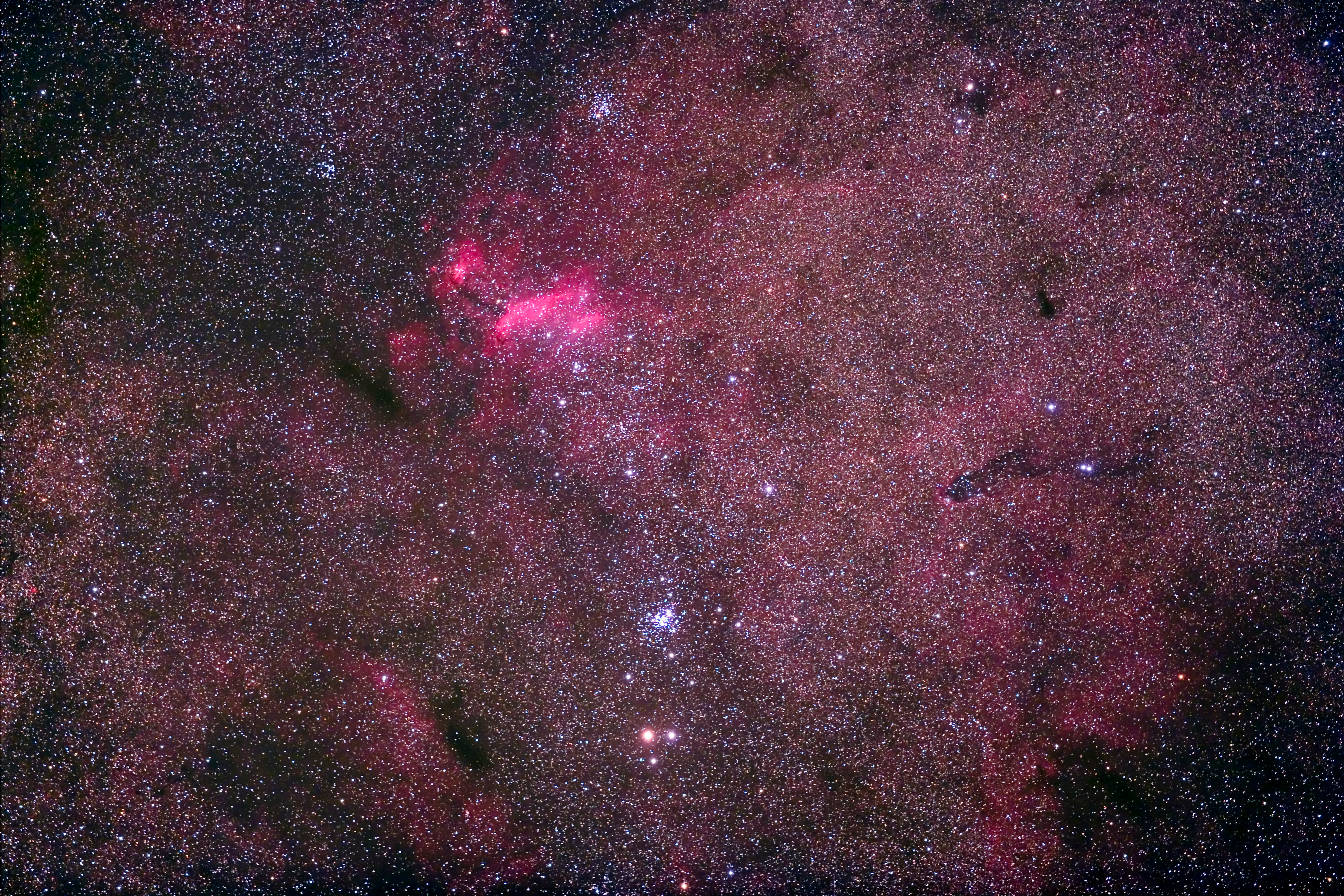
NGC 6231 is sometimes called the Northern Jewel Box Cluster because resembles the original Jewel Box Cluster (NGC 4755) in Crux. But at nearly –42° in declination, calling it “northern” is a bit confusing. Also called the Baby Scorpion because it is located near Zeta1 (ζ1) and Zeta2 (ζ2) Scorpii, which form the base of the constellation Scorpius’ tail, NGC 6231 is the head of the False Comet, an area rich in stars trailing down to Mu (μ) Scorpii.
There are several nebulae in the area, though most are difficult to see. The region around this cluster contains numerous hot, luminous young stars. Such stars have a spectral classification of O or B and are formed from the same gas cloud; these groups are called OB associations. The cluster is part of the Scorpius OB1 association and lies 5,500 light-years away. Zeta1, considered one of the most luminous stars in the sky, is a member. Zeta2 lies only 150 light-years away and, while visually brighter, is intrinsically less luminous than Zeta1. The cluster and OB association lie in the arm of the Milky Way closer to the center of the galaxy than the one housing our Sun. The region is surrounded by a large, faint cloud of gas and dust called RCW 113.
For observers at northern temperate latitudes, it’s another brilliant object located near or below the horizon. Where it rises, this young cluster is worth a look. It is the 6th-brightest cluster in the whole sky at magnitude 2.6, with a width of 14′. It’s a great object for binoculars or a small telescope. NGC 6231 was first recorded by Italian observer Giovanni Batista Hodierna before 1654. He developed a list of noncometary objects some 120 years before Charles Messier.









